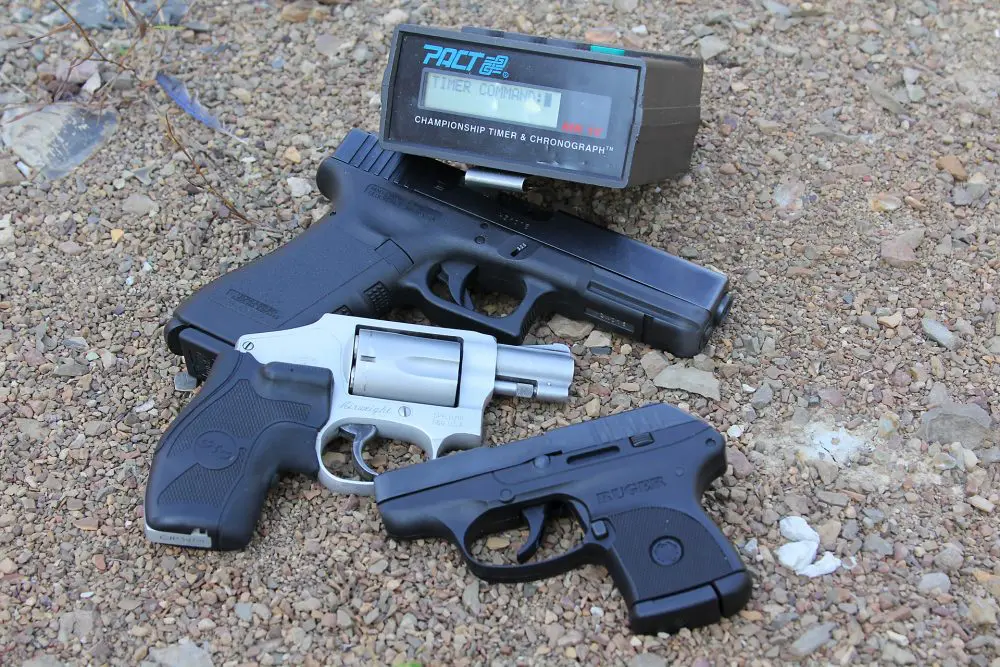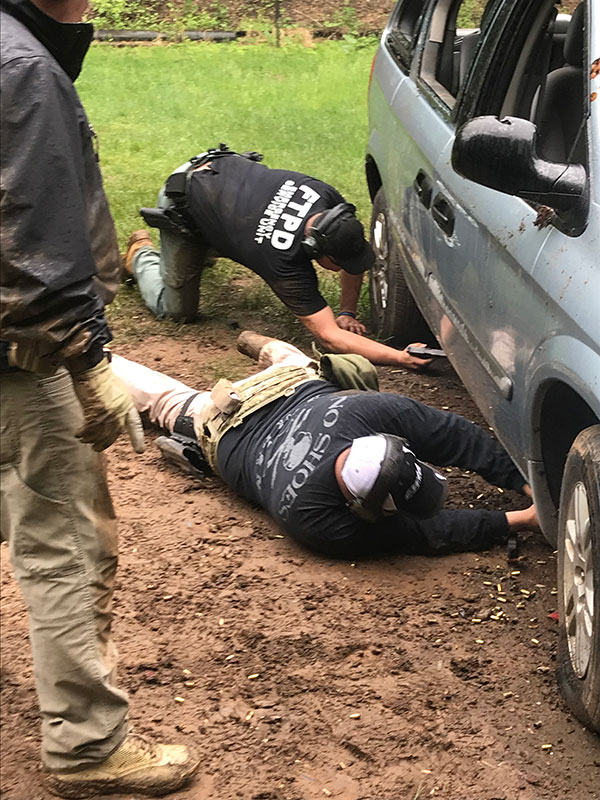

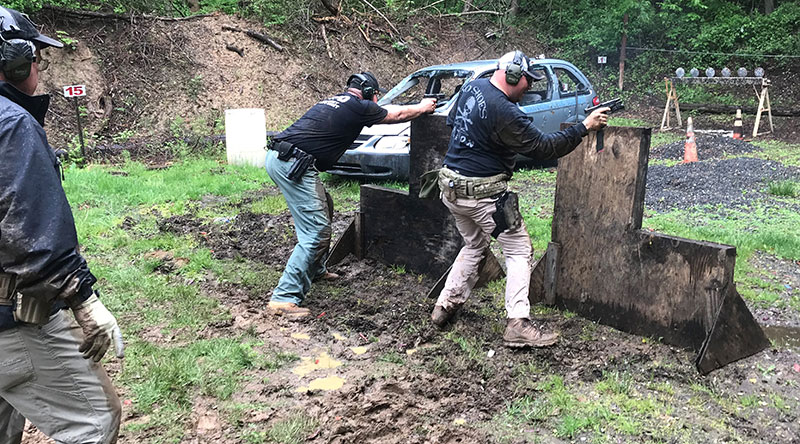

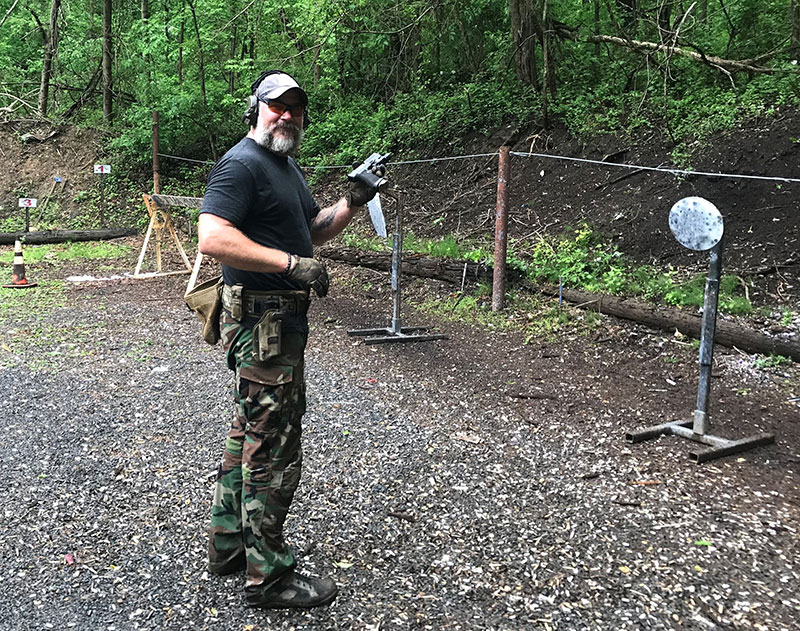

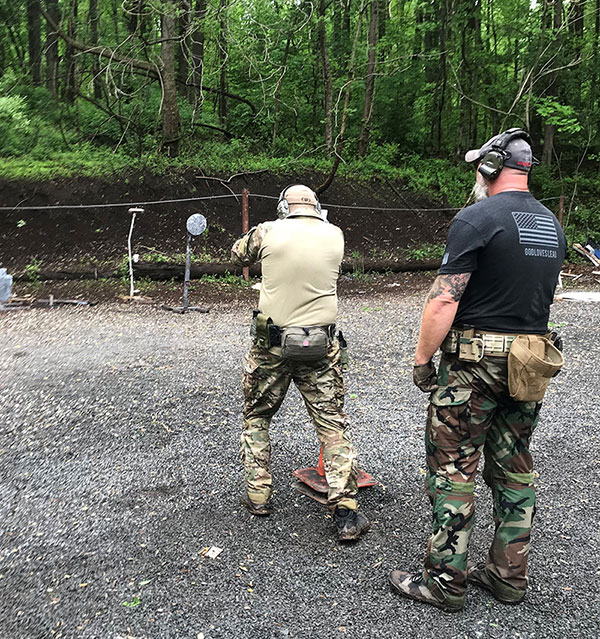
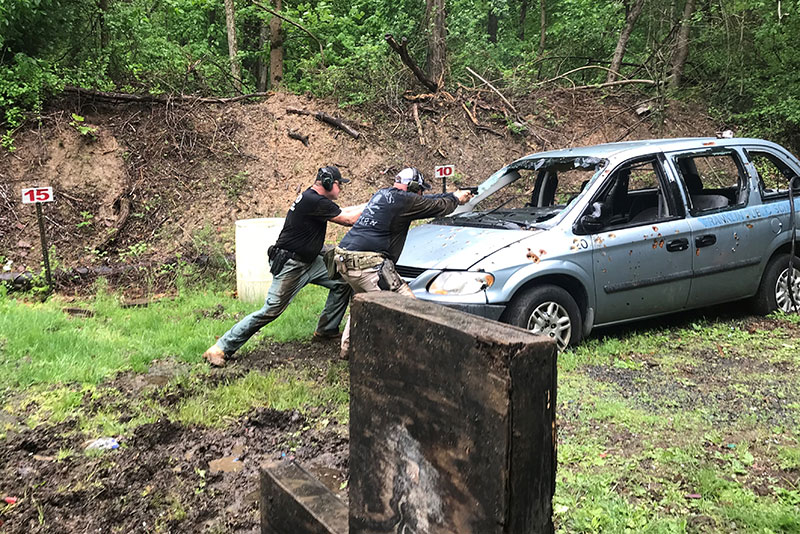
“If at the end of the next three days of pistol training, you’ve learned one or two good take-aways, I will have done my job.”
Dan Brokos began his Training Day 1 brief with this humble statement. He didn’t promise any magic and honestly shared with us the evolution of fighting with a firearm based on lessons learned since September 11, 2001.
Committed to always being a student, I leapt at the chance to train with Dan Brokos of Lead Faucet Tactical, as I had heard good things about him. The class was three days of pistol hosted by Franklin Township PD in New Jersey. FTPD has a history of bringing solid training to regional law enforcement, and this was no exception.
Dan Brokos’ background includes over 26 years in the U.S. Army, with 21 years in Special Operations. He has written several articles, developed some outstanding products, and offers quality training.
Table of Contents
TRAINING DAY 1
We spent TD1 working on basics, getting warmed up with some fundamental drills, and with Dan getting a feel for the level of experience and ability of the class.
He had us building our ability to fight with a handgun from the ground up, and we discussed and practiced using a less “front-sight centric” method of close-quarters engagements, instead seeing the target more clearly and using the sights slightly blurred and more intuitively, utilizing a good grip and stance.
The training continued with a good balance between shooting from distance with an emphasis on accuracy, to closer engagements with shorter time intervals. Par times were shared in all drills, creating self-induced stress in the class of experienced and competitive personalities.
Dan talked about a stronger support-hand grip as a big aid in recoil management and straightening out shots that tended left (for right-handed shooters). This echoed similar comments from other former SOF personnel with whom I have trained, and it works. Conversely, Dan advised gripping with the shooting hand only as firm as one would “grip a hammer,” allowing independence of trigger-finger manipulation.
ON TO TD2
Training Days 1 and 2 continued building on existing skills and shaving off inefficiencies. The entire class, all good shooters, experienced improvements in speed and accuracy. It was the little things that, as they accumulated, led to the most improvement.
Old myths were debunked and the “why” of suggested techniques was shared, such as the suggestion to use as much finger in the trigger guard and on the trigger face as one’s own physiology demanded. With the goal of pressing the trigger straight to the rear, the old rule of using the middle of the first pad of the finger was logically disposed of with a common-sense explanation of why our individual differences in hand size and weapons platform called for adjustments to finger placement that made sense for each person.
The analogy of pulling the trigger “straight back to the shoulder” assisted in the mind’s eye of seeing where we needed to go with trigger control.
DRILLS
The class spent significant time working drills to emphasize driving the gun. Leading with the eyes and snapping over to the next threat by driving from the hips was worked over and over. This was accomplished by placing targets a significant distance apart, requiring an aggressive shifting of the eyes and then the gun across the width of the range. Aligning the centerline of the body with the target that was transitioned to aided in stopping the pistol where the eyes led.
One of the “one or two good take-aways” that I had not heard before involved Brokos’ take on one-handed shooting. Prior training had simply called for a two-handed grip and stance with one hand dropped off the pistol.
Dan’s explanation of the suggested technique for one-handed shooting called for a stronger grip pressure with the shooting hand and included pulling the shooting thumb down and deeper around the gun, flexing the arm with the elbow turned in and with the triceps muscle turned under, a lowered center of gravity, and more weight on the front leg and aimed shooting from the centerline.
Putting all that together as taught really helped with recoil management and rapid, accurate single-handed shooting.
Drills to test these evolving skills were many and varied, and as these concepts were internalized, Brokos had us begin shooting with a measurable cadence. He had the class work hard to overcome a common tendency to shoot a called-for number of hits, then take our time moving on the next threat. Rather, with multiple threats/targets, we worked to shoot each round with the same time interval, or split times.
MUD BATH
The weather, which had been threatening rain for all three days, finally delivered enough to turn portions of the ground into a muddy quagmire. Of course, this coincided with the portion of the class that introduced a variety of unusual shooting positions, most of them on the ground.
We practiced shooting from our knees, from various prone positions, and with techniques that used one and both hands, from under, through and around vehicles. After everyone felt comfortable with these positions with both dominant and non-dominant hands, we employed these techniques in timed team stress shooting competitions—all of which included rolling around in the mud.
MY TAKE-AWAYS
The biggest take-aways for me were the new (to me) way of looking at one-handed shooting and managing recoil while doing so, and the unusual shooting positions while employing a handgun. I’d seen these positions with a rifle and was pleasantly surprised with the accuracy achieved (even while feeling like a pig in slop).
Having been in the industry for quite some time, I am consistently drawn to training that emphasizes solid fundamentals, as there is no substitute. Applying those fundamentals in a variety of conditions and positions is a lot of fun, and clearly shows that a focus on those basics leads to success no matter where you are and what you are doing.
Ron Flowers is a formerly Commissioned veteran of the U.S. Navy (Reserves) and the U.S. Merchant Marine, a retired lieutenant of the Allentown, Pennsylvania Police Department, and former Law Enforcement Professional contractor in Operation Enduring Freedom. He serves the NRA Law Enforcement Division as an Adjunct Instructor for Police Firearms Instructor Development. He can be reached at [email protected].
SOURCE
LEAD FAUCET TACTICAL
(919) 931-0414
www.leadfaucettactical.com


